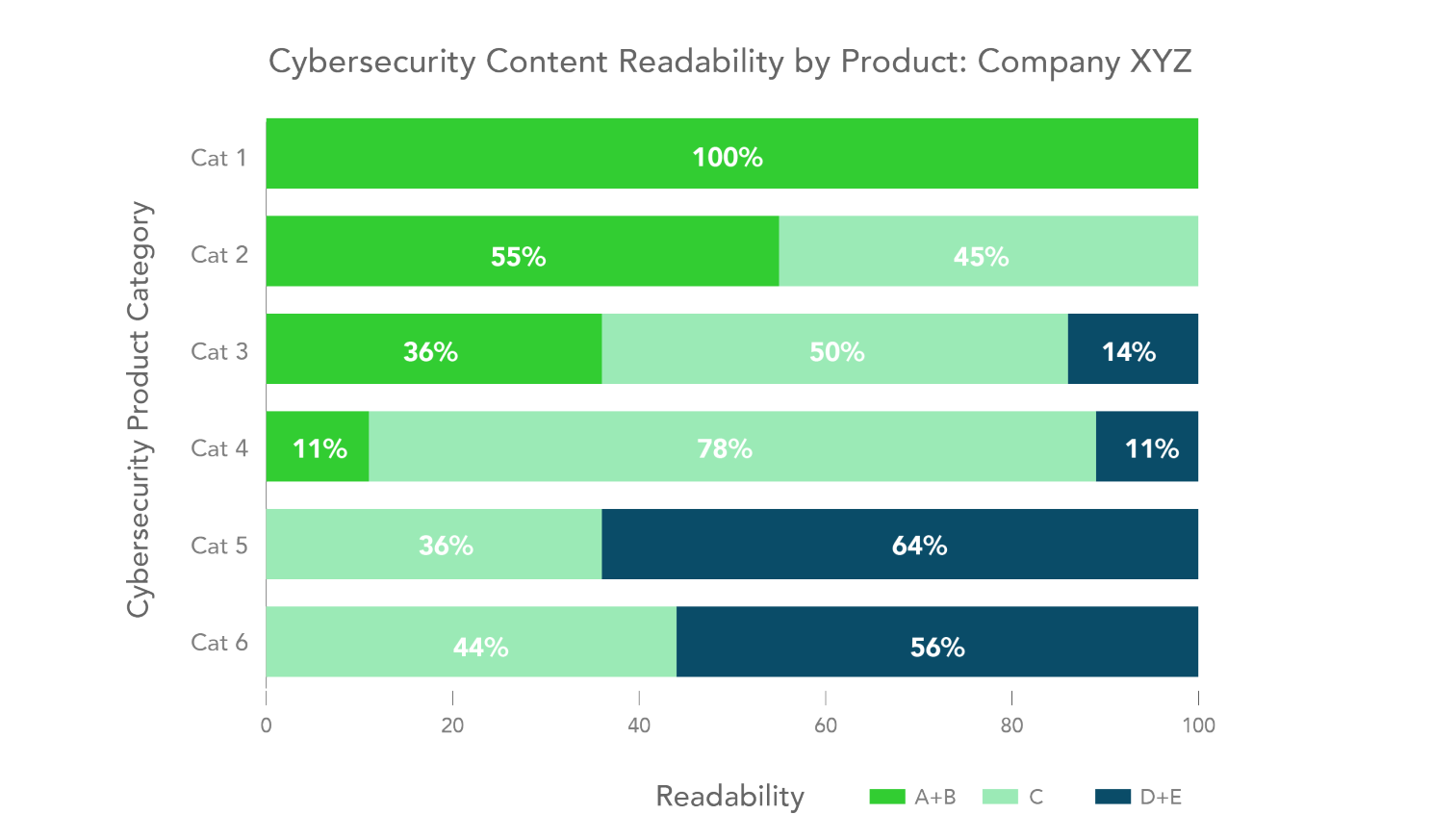Cybersecurity Content IS Hard to Read: Here’s Proof!
In a previous post, Content Readability: Why It Matters I discussed the concern that a lot of cybersecurity content is likely unreadable for a significant percentage of its target audience. The more I think about it, however, I don’t think that’s true. The content is likely readable…but only if the reader puts enough time and effort into it.
Which they probably won’t.
Business communicators know all too well the challenge is cutting through the noise to get the reader’s time and attention. If you don’t effectively combine the message with clear visual communication, your readers may miss the key messages or decline to share the content with other stakeholders. This is especially consequential when those stakeholders are involved in the buying decision.
75% of Cybersecurity Content Could be Easier to Read
How big is the problem? Big enough to make readability a priority. We reviewed over 600 pieces of marketing content (in PDF format) from the 13 cybersecurity leaders listed below:
Akamai Technologies
AT&T Cybersecurity
Broadcom Inc.
Check Point Software Technologies
CrowdStrike
DXC Technology
F5 Networks
IBM
Palo Alto Networks
Secureworks
Sentinel One
Trend Micro
Zscaler
Then we scored them using Readable.com’s AI scoring platform. Readable’s algorithm taps widely-used readability formulas to provide a score from A to E (with A being the most readable).
What did we find?
Only 24% of cybersecurity content scored either an A or B
It’s fair to say that an AI readability tool like Readable.com doesn’t account for unique cybersecurity terms and concepts that many (but not all) readers would be familiar with. With that caveat, there’s still a tremendous opportunity to simplify content for increased comprehension.
“Three out of four pieces tested, didn’t earn an acceptable readability score.”
Have you thought about your cybersecurity content from a readability perspective? If you haven’t, what are the chances your biggest competitors have?
Prioritizing Readability is a Competitive Advantage
Nearly half of Company 1’s content is likely to be understood easily, which is a significant advantage over companies 6 to 13.
From a sales and marketing perspective, this is where relative scores against competitors might mean the difference between your product brief or whitepaper being consumed or ignored because someone else’s content was easier to understand.
It’s also interesting that within each company, we found diversity in the scores. It makes me wonder if some marketing teams are more focused on readability than others or if it’s simply coincidental. From a company perspective, these differences could explain why it’s harder to get leads for some offerings or move them through the sales funnel efficiently.
Readability Can Accelerate or Slow Down Sales
If we look at individual company results, we found readability can vary across product categories. The example above shows results for one company that had five different product categories on its site. How much more effective would their marketing efforts be if all their content was as readable as the content in the top two categories? It would be interesting to overlay their lead gen results relative to how easy it is to consume the content. It’s likely there’s a correlation between better lead behavior for Category 1 than for Category 5 or 6.
The Big Caveat…Relevance Still Matters
When looking at readability across products within one company, it’s possible that some easy-to-read content simply doesn’t provide the level of detail necessary to be effective in moving a prospect forward in the buyer’s journey. Readability does not equal relevancy and relevancy is as crucial as readability. Sacrificing either can significantly reduce the value of any marketing content.
So, what improves readability? In part two, we’ll share five recommendations for improving your readability scores. We’d love to hear your feedback and thoughts on this research. Leave a comment below or reach out to Jennifer Throop.
At Altitude, we’re focused on creating content that delivers the ‘most relevant information’, in the shortest amount of time.



